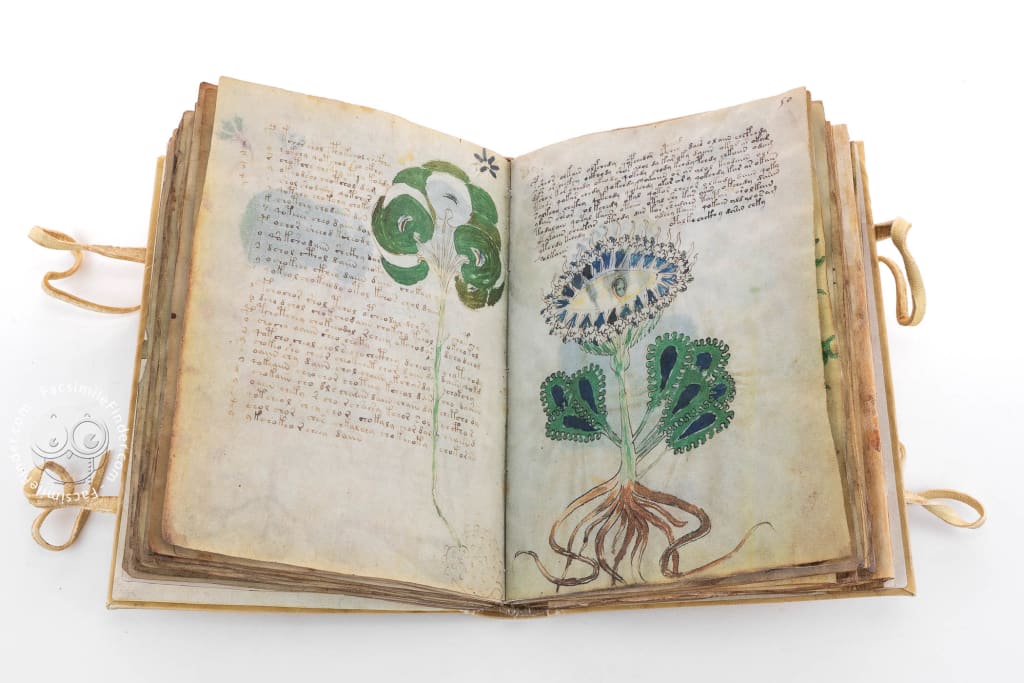The Voynich Manuscript: Unlocking the Secrets of History's Unbreakable Code
Unveiling the Enigma of an Ancient Text and Its Mysterious Language

In the realm of mysterious and perplexing texts, the Voynich Manuscript reigns as one of the most enigmatic. A beautifully illustrated codex filled with an unknown language and cryptic symbols, this medieval manuscript has confounded scholars, linguists, and cryptographers for centuries. Named after the Polish-American book dealer Wilfrid M. Voynich, who discovered it in 1912, the Voynich Manuscript has become a subject of fascination and intrigue. Join us on a captivating journey as we explore the origins, contents, and ongoing efforts to decipher the secrets hidden within the pages of the Voynich Manuscript.
The Voynich Manuscript is a small book measuring 23.5 x 16.2 centimeters and containing approximately 240 vellum pages. It is believed to have been created in the early 15th century, though its origins and author remain unknown. The text is written in a mysterious script, often referred to as Voynichese, with an accompanying array of intricate illustrations depicting plants, astronomical charts, and unidentified human figures. The combination of its unique language, unidentifiable imagery, and lack of a known purpose has made the Voynich Manuscript a puzzle that has resisted all attempts at decryption.
The Voynich Manuscript is divided into several sections, each featuring different themes and subjects. The most prominent sections include botanical illustrations of unknown plant species, astronomical diagrams, astrological charts, and biological drawings resembling anatomical or pharmaceutical elements. The text itself consists of a series of interconnected glyphs, written from left to right, following the structure of a typical script. However, despite extensive analyses, researchers have yet to decipher the language or determine the intended meaning of the text.
Over the years, numerous theories have emerged in an attempt to shed light on the Voynich Manuscript's origins and purpose. Some propose that it is an elaborate hoax, while others believe it to be a work of cryptography, alchemy, or an encoded religious text. Some even speculate that the manuscript was created by an extraterrestrial civilization or contains knowledge of advanced scientific concepts far ahead of its time. However, these theories remain largely speculative, and the true nature of the manuscript continues to elude us.
Scholars have explored various historical contexts and potential authors linked to the Voynich Manuscript. Some theories suggest it may have been the work of a medieval alchemist or a physician, seeking to record secret knowledge or medicinal remedies. Others propose connections to known historical figures such as Roger Bacon, John Dee, or even Leonardo da Vinci, speculating that the manuscript represents their hidden research or personal writings. However, no conclusive evidence has emerged to support any particular author or purpose.
Over the centuries, numerous scholars and cryptographers have attempted to decipher the Voynich Manuscript, but all efforts have thus far been in vain. Famous codebreakers, including William Friedman and Elizebeth Friedman, who were instrumental in cracking complex World War II codes, were unable to unlock the manuscript's secrets. Modern computational analyses, linguistic studies, statistical methods, and artificial intelligence algorithms have also been employed, but the manuscript's language and content remain stubbornly elusive.
Despite the challenges, researchers continue to explore new avenues in deciphering the Voynich Manuscript. In recent years, interdisciplinary collaborations have brought together linguists, computer scientists, historians, and mathematicians to tackle the mystery. Advances
in machine learning, pattern recognition, and statistical modeling have provided new tools to analyze the text and imagery. Additionally, high-resolution imaging techniques have revealed previously unseen details and micro-features that could potentially hold vital clues to unraveling the manuscript's secrets.
The Voynich Manuscript's enduring mystery has garnered global attention and sparked numerous theories, debates, and artistic interpretations. Its peculiar illustrations and cryptic script have inspired authors, filmmakers, and artists, finding echoes in popular culture and literary works. The manuscript's allure lies in its ability to evoke the unknown, pushing the boundaries of human knowledge and challenging our understanding of the past.
The Voynich Manuscript stands as an unsolved riddle, a testament to the human desire for knowledge and the mysteries that persist beyond our grasp. As technology advances and interdisciplinary collaborations flourish, the hope of deciphering its secrets grows stronger. The journey to unveil the Voynich Manuscript's enigma continues, offering the tantalizing prospect of unlocking ancient wisdom or unraveling a brilliant medieval puzzle. Until that day arrives, the manuscript will continue to enthrall and captivate the imaginations of those drawn to its cryptic allure.
About the Creator
khalil el yazaji
As a passionate writer, I dive deep into crafting narratives that explore the essence of my subjects. Unraveling the secrets behind captivating storytelling and decoding film industry trends, I embark on a thrilling journey of discovery.





Comments
There are no comments for this story
Be the first to respond and start the conversation.